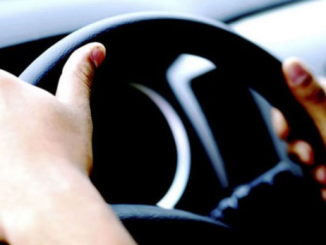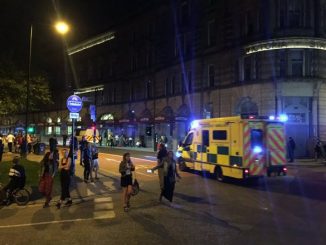
While this article (below) takes a look specifically at working class whites who voted for trump, rural voters only made up 17 % of the electorate and white men (63% and white women 53%) went for Trump over Clinton having an average annual income of $70,000 with more college educated whites going for Trump. And Tina Fey recently blasted college-educated white women who voted for Donald Trump.
“A lot of this election was turned by white, college-educated women who now would like to forget about this election and go back to watching HGTV,”
Despite obnoxious comments by liberals like Fey, this concurs with what we have been saying about the broad spectrum of white support. The election wasn’t one about economics, but rather about demographics and immigration. “The Wall” won the election, not necessarily Trump.
Beyond Economics: Fears of Cultural Displacement Pushed the White Working Class to Trump
Daniel Cox, Rachel Lienesch, and Robert P. Jones, PRRI
Executive Summary:
Perhaps the most contested question from the 2016 presidential election is what factors motivated white working-class voters to support Donald Trump over Hillary Clinton by a margin of roughly two to one. New analysis by PRRI and The Atlantic, based on surveys conducted before and after the 2016 election, developed a model to test a variety of potential factors influencing support for Trump among white working-class voters. The model identifies five significant independent predictors of support for Trump among white working-class voters. No other factors were significant at conventional levels.
Overall, the model demonstrates that besides partisanship, fears about immigrants and cultural displacement were more powerful factors than economic concerns in predicting support for Trump among white working-class voters. Moreover, the effects of economic concerns were complex—with economic fatalism predicting support for Trump, but economic hardship predicting support for Clinton.
- Identification with the Republican Party. Identifying as Republican, not surprisingly, was strongly predictive of Trump support. White working-class voters who identified as Republican were 11 times more likely to support Trump than those who did not identify as Republican. No other demographic attribute was significant.
- Fears about cultural displacement. White working-class voters who say they often feel like a stranger in their own land and who believe the U.S. needs protecting against foreign influence were 3.5 times more likely to favor Trump than those who did not share these concerns.
- Support for deporting immigrants living in the country illegally. White working-class voters who favored deporting immigrants living in the country illegally were 3.3 times more likely to express a preference for Trump than those who did not.
- Economic fatalism. White working-class voters who said that college education is a gamble were almost twice as likely to express a preference for Trump as those who said it was an important investment in the future.
- Economic hardship. Notably, while only marginally significant at conventional levels (P<0.1), being in fair or poor financial shape actually predicted support for Hillary Clinton among white working-class Americans, rather than support for Donald Trump. Those who reported being in fair or poor financial shape were 1.7 times more likely to support Clinton, compared to those who were in better financial shape.
It is notable that many attitudes and attributes identified as possible explanations for Trump’s support among white working-class voters were not significant independent predictors. Gender, age, region, and religious affiliation were not significant demographic factors in the model. Views about gender roles and attitudes about race were also not significant. It is also notable that neither measure of civic engagement—attendance at civic events or religious services—proved to be a significant independent predictor of support for Trump.
The report also provides an in-depth profile of white working-class Americans, along with analysis of this group’s world view, outlook, and attitudes about cultural change and policy:
- Nearly two-thirds (65%) of white working-class Americans believe American culture and way of life has deteriorated since the 1950s.
- Nearly half (48%) of white working-class Americans say, “things have changed so much that I often feel like a stranger in my own country.”
- Nearly seven in ten (68%) white working-class Americans believe the American way of life needs to be protected from foreign influence. In contrast, fewer than half (44%) of white college-educated Americans express this view.
- Nearly seven in ten (68%) white working-class Americans—along with a majority (55%) of the public overall—believe the U.S. is in danger of losing its culture and identity.
- More than six in ten (62%) white working-class Americans believe the growing number of newcomers from other countries threatens American culture, while three in ten (30%) say these newcomers strengthen society.
- Nearly six in ten (59%) white working-class Americans believe immigrants living in the country illegally should be allowed to become citizens provided they meet certain requirements, while 10% say they should be allowed to become permanent legal residents. More than one in four (27%) say we should identify and deport illegal immigrants. Notably, support for a path to citizenship is only slightly lower than support among the general public (63%).
- More than half (52%) of white working-class Americans believe discrimination against whites has become as big a problem as discrimination against blacks and other minorities, while 70% of white college-educated Americans disagree.
- Fewer than four in ten white working-class Americans report they are in excellent (5%) or good shape (33%) financially, compared to six in ten who say they are in fair (35%) or poor shape (25%). White working-class Americans about as likely to say their financial situation has diminished (27%) as they are to say it has improved (29%). White college-educated Americans, in contrast, are about three times as likely to say their financial circumstances have gotten better than gotten worse (41% vs. 14%, respectively).
- A majority (54%) of the white working class view getting a college education as a risky gamble, while only 44% say it is a smart investment.
- Six in ten (60%) white working-class Americans, compared to only 32% of white college-educated Americans say because things have gotten so far off track, we need a strong leader who is willing to break the rules.


